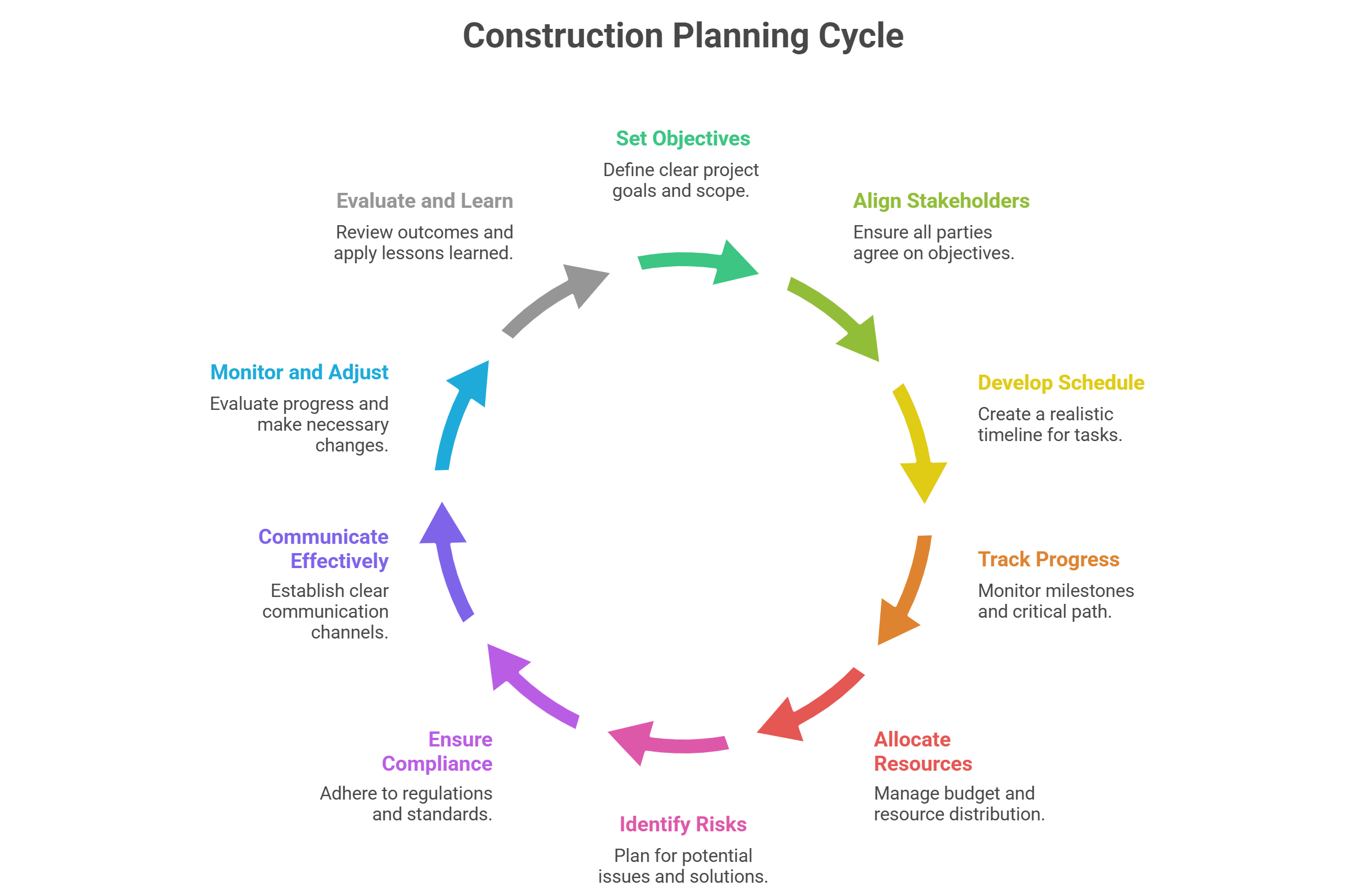Efficient construction planning aligns schedules, budgets, and quality targets to prevent costly overruns. Core elements include detailed scheduling, risk control, and team coordination, all tied to robust construction project management. Studies by ACIF show poor planning causes up to 30% of project delays in Australia, highlighting the need for structured approaches in planning for construction projects.

Setting Clear Project Objectives and Scope
Defining measurable objectives early in construction planning sets a strong foundation, ensuring every team member understands the end goals. This step brings cost visibility and aligns efforts, reducing surprises down the line. Clear objectives of construction planning help avoid scope creep while integrating planning in construction management for smoother execution.What Is Construction Planning? The Steps for Success
Aligning stakeholder expectations with deliverables
Early alignment with stakeholders ensures deliverables match real needs, cutting down on rework and boosting satisfaction. This process fosters trust through open discussions.
- Budget approval checkpoints
- Design sign-offs
- Communication frequency
Developing a Realistic Project Schedule
Accurate scheduling in construction planning connects site prep to final handover, creating a roadmap that anticipates bottlenecks. Tools like digital Gantt charts or Primavera enhance precision. The Construction Industry Institute notes these reduce overruns by 18%, making planning in building construction more reliable for Australian projects.
Integrating critical path and milestone tracking
Tracking the critical path keeps teams proactive by highlighting dependencies that could delay the entire build. Milestones act as checkpoints for progress.
- Foundation completion
- Framing inspection
- Final fit-out
Resource Allocation and Budget Forecasting
Distributing labour, materials, and equipment effectively in construction planning avoids idle costs and maintains momentum. Forecasting identifies potential shortfalls early. The ABS reports that material shortages raised average project budgets by 11% in 2024, underscoring the importance of proactive planning in construction.
Balancing labour, materials, and equipment costs
Planners maintain cost balance using forecasting tools to track expenses in real time, ensuring no single area overspends. For instance, adjusting crew sizes based on material arrivals prevents delays.
Risk Identification and Contingency Planning
Early risk mapping in construction planning minimises financial shocks by addressing issues like environmental delays or supply volatility before they escalate. This forward-thinking approach, part of a solid construction management plan, safeguards timelines and budgets in volatile markets.
Building flexibility into cost and time allowances
Planners assign contingency funds and buffer days to absorb unexpected hurdles, such as weather disruptions. Projects with dynamic contingency reduced budget blowouts by 15% according to PwC Australia 2023, proving its value in construction planning & management.
Compliance with Construction Regulations and Standards
Adhering to national and state standards in construction planning protects builders from legal penalties while ensuring safe, quality outcomes. Regular quality assurance audits within the NCC framework help maintain integrity throughout planning and construction phases.
Aligning with NCC and state-based safety codes
Checking NCC Volume 1 alongside state safety codes ensures site integrity and worker protection. Entities like WorkSafe Victoria, Safe Work NSW, and building certification compliance bodies guide this, making construction site planning compliant and efficient.
Communication and Collaboration Framework
Integrated communication in construction planning prevents information gaps that could derail progress. Digital dashboards and cloud-based document control streamline updates, supporting the overall site management plan for better team synergy.
Leveraging digital tools for real-time coordination
BIM platforms and apps like Procore or Buildxact sync all trades through mobile updates and version control. This enhances construction planning efficiency, allowing instant adjustments in planning for construction projects without miscommunications.
Monitoring Progress and Adjusting Plans
Monitoring KPIs in construction planning helps teams spot deviations quickly and respond effectively. Tools for cost variance and earned-value tracking provide data-driven insights, keeping the building work plan on course.
Using performance metrics to refine timelines
Metrics like schedule adherence guide re-forecasting to address slips early. For example, a low productivity ratio might trigger resource shifts.
- Schedule variance
- Cost performance index
- On-time task rate
Post-Construction Evaluation and Lessons Learned
Structured review sessions turn project data into process improvements, capturing what worked and what didn’t. Documentation, client feedback, and benchmarking against past builds refine future strategies in construction site management plan development.
Turning project insights into future planning improvements
Storing insights in knowledge databases helps refine future construction planning frameworks by identifying patterns. Feedback loops encourage continuous improvement, such as updating a construction management plan template for upcoming ventures.


